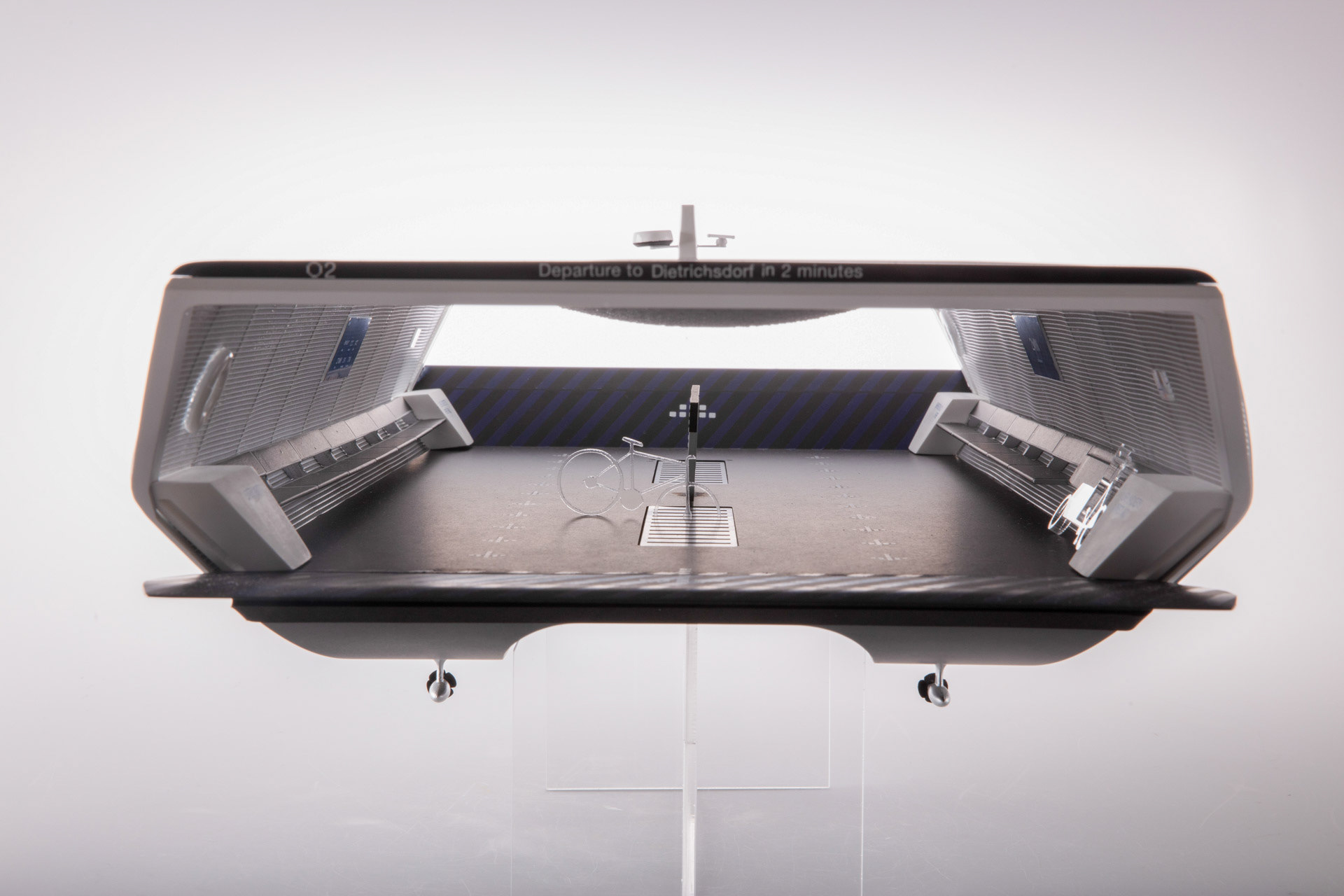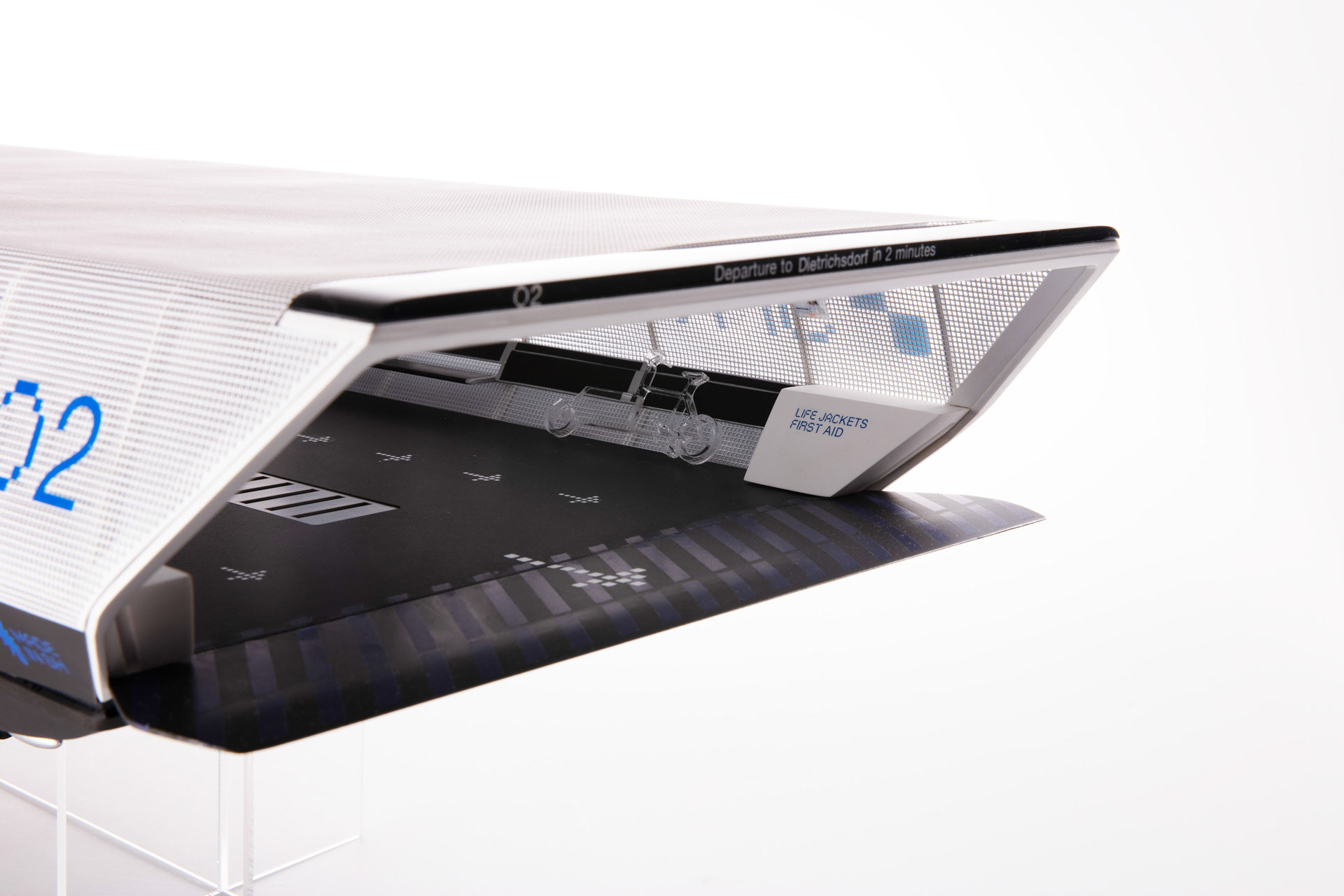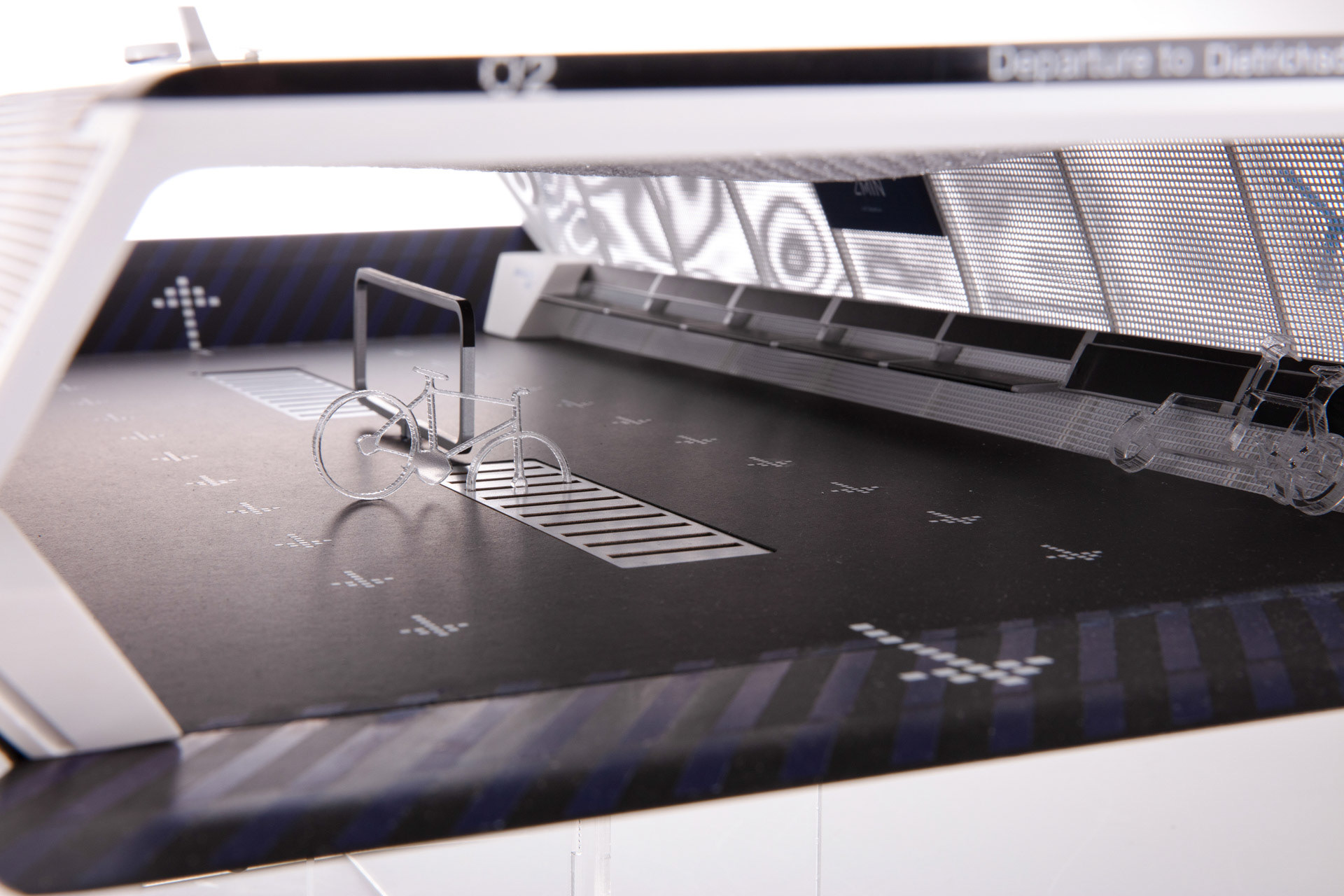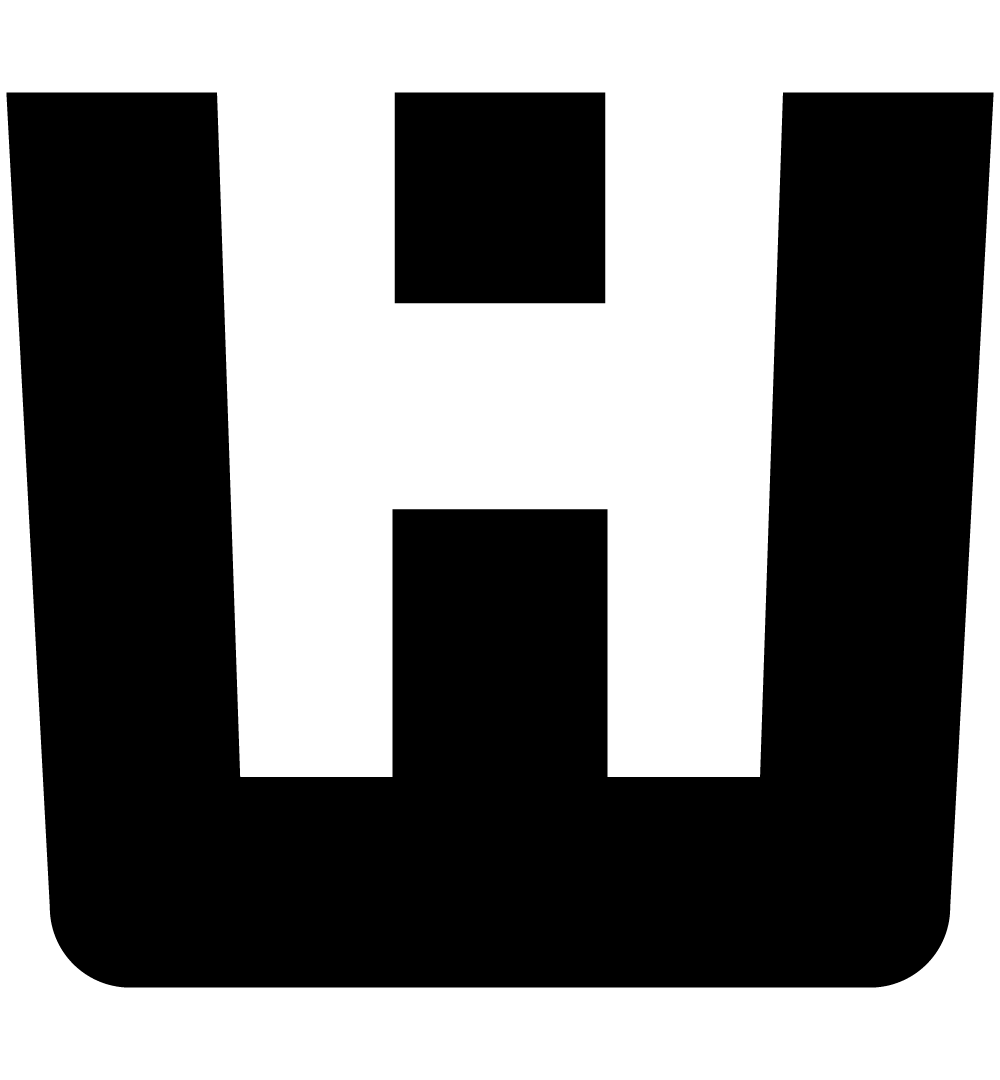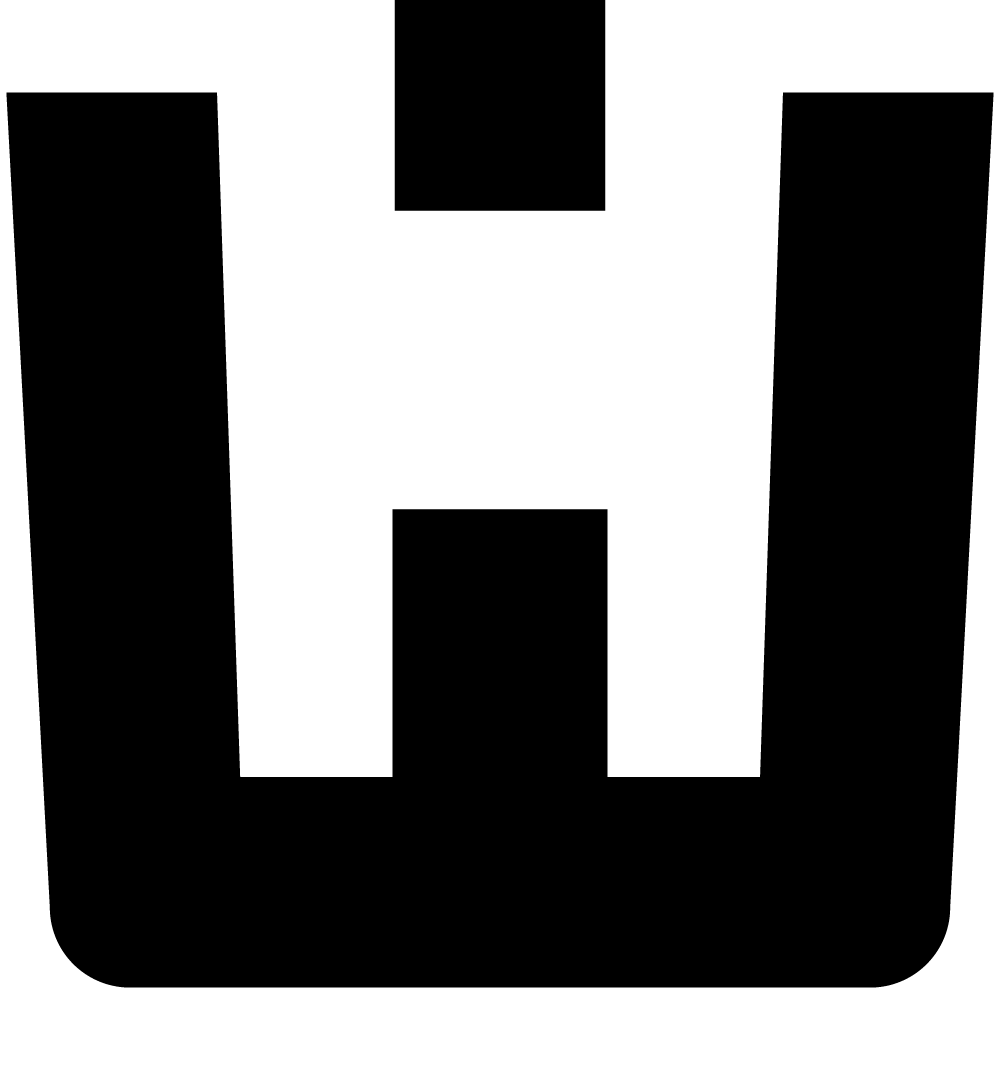LINK
Ultra simple and smart through design.
Group members: J.Feldmann, J.Kaufmann, L.Steinbock, L.Esteban, K.Struve
2024 - 15 Weeks
The Problem
Metropolises located by water are rapidly growing living spaces and increasingly require efficient, environmentally friendly mobility solutions. Public transportation via waterways offers promising potential to reduce car traffic, improve air quality, and contribute to climate neutrality. In addition, it could help alleviate the burden on urban infrastructure. However, this sector also faces the ongoing challenge of a shortage of skilled workers, raising the question of sustainable and future-oriented concepts to strengthen public transport.
Ferries in Kiel currently operate after a fixed time schedule, long waits and small entry gates generate bad user experiences, aren't inclusive and aren't sustainable. Every day students and industry workers tend to use alternative mobility solutions. The local ferry company complained about the lack of skilled captains and due to the lack of mobility also in after hours there is a great discrepancy of cultural offerings between the west and east coasts.
The Objective
The goal of this project was to develop "ultra-simple" autonomous ferry concepts that are both climate-friendly and easy to implement. The concept aims to establish autonomous waterway transport as a new mobility solution and serve as a model for future innovations in the field of autonomous mobility. A central aspect was to make the ferries quickly realizable through minimalist design and the use of cost-sensitive, yet high-quality materials.
Public transport has the potential to transform cities. Connecting the industrial East- and the cultural West- coast of Kiel with 24/7 ferries has the potential to shape a more unified city.
The Vision
Basic Idea of the Solution
The basic idea was to develop a fully electric ferry that, by avoiding complex technologies and implementing simple yet effective solutions, meets the requirements of modern public transport. The concept LINK relies on minimalist design without neglecting user experience and safety aspects. The ferry is intended to operate autonomously in order to address the shortage of skilled workers and provide a scalable solution for the future.
Aerial view of Kiel: https://sv.wikipedia.org/wiki/Kiel#/media/Fil: KielerInnenFoerdeLuftaufnahme.jpg
The Process
Designing the Plattform
With this starting point it allowed us to focus on information placement. „Ultra simple“ here meant simple and clear information placement and an open and lightweight design
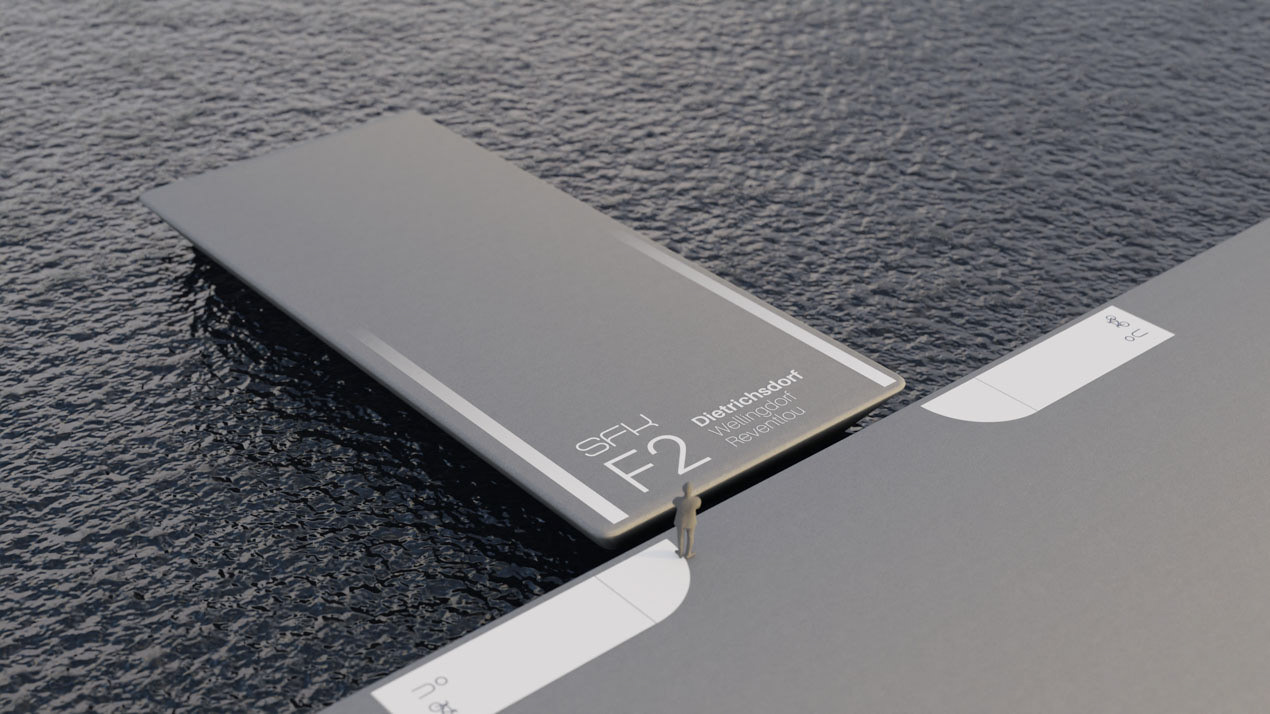
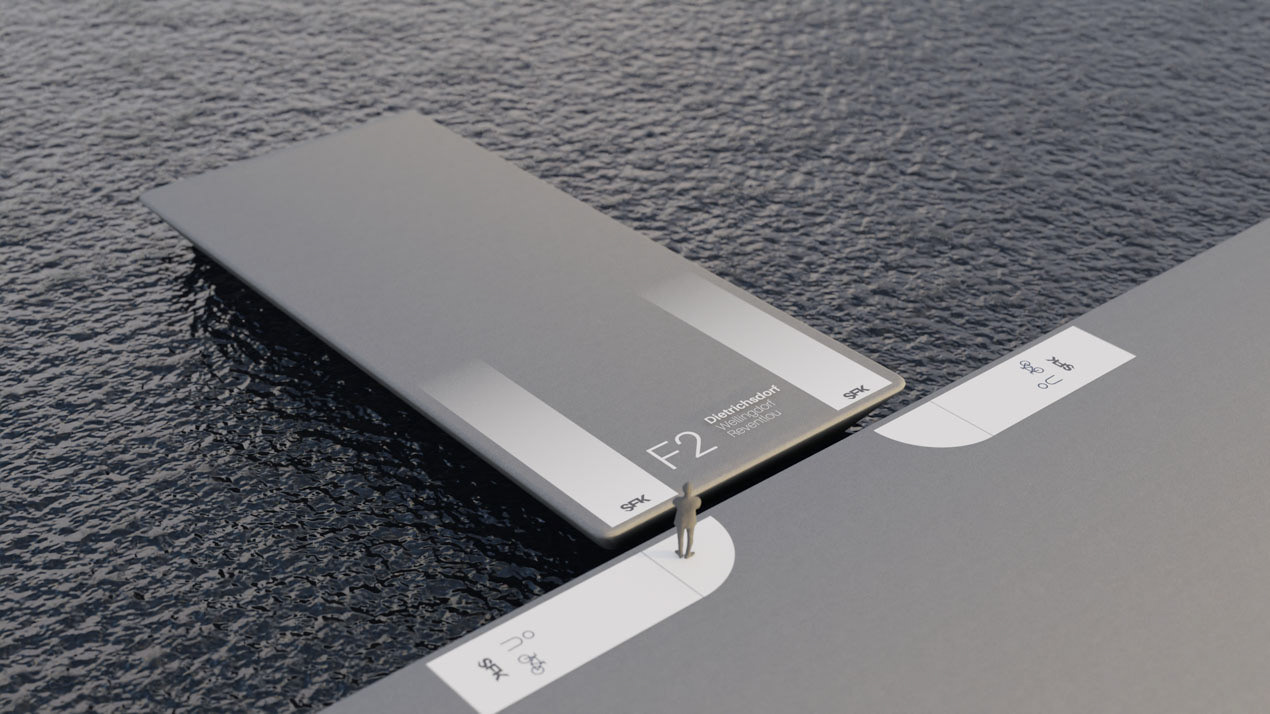
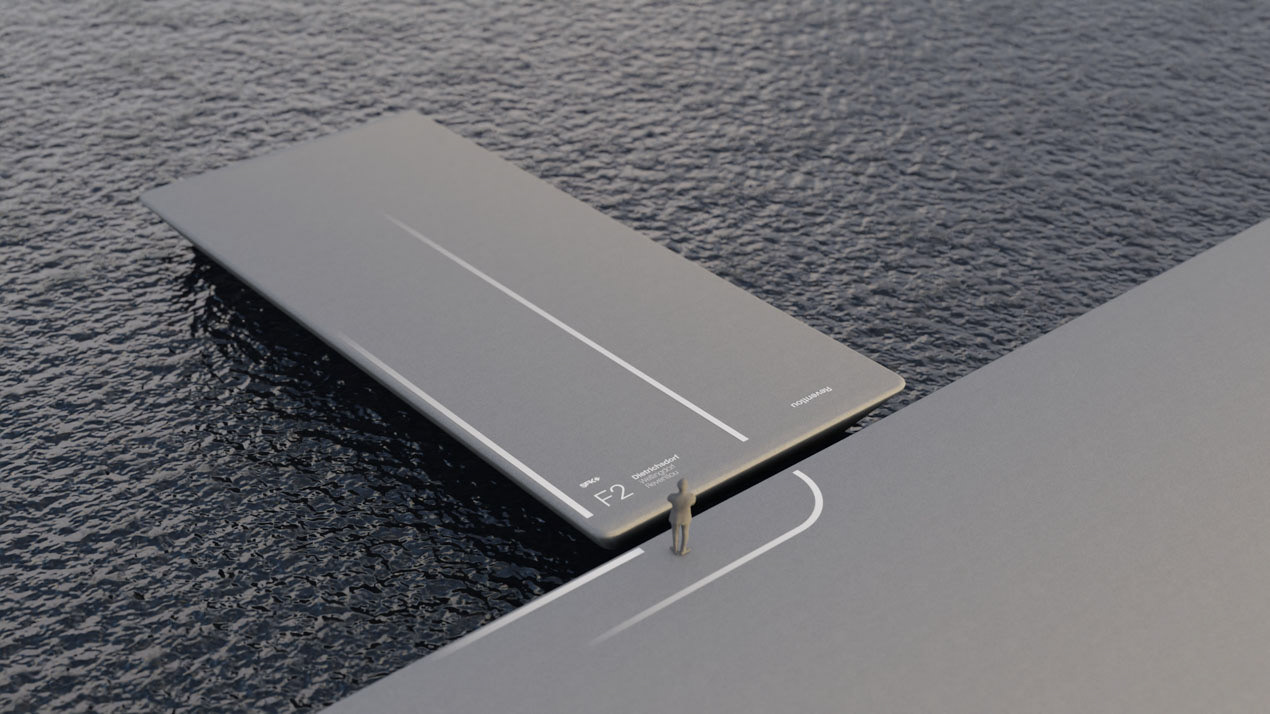
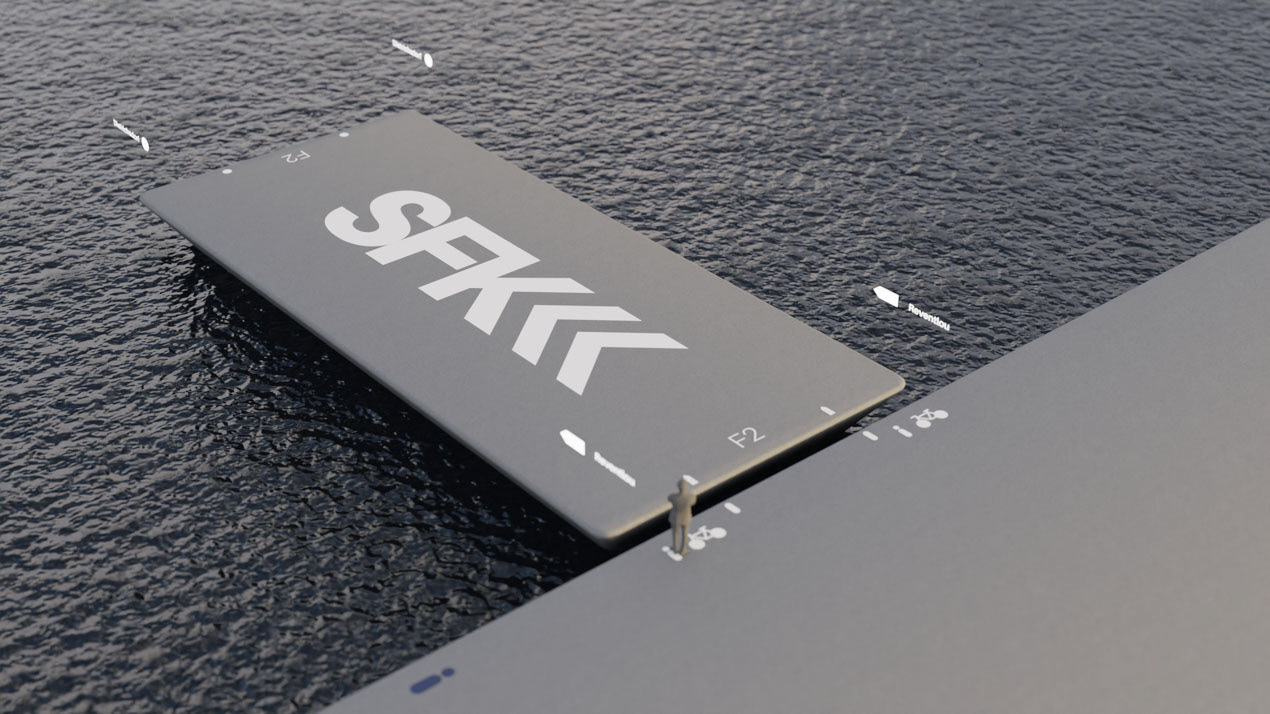
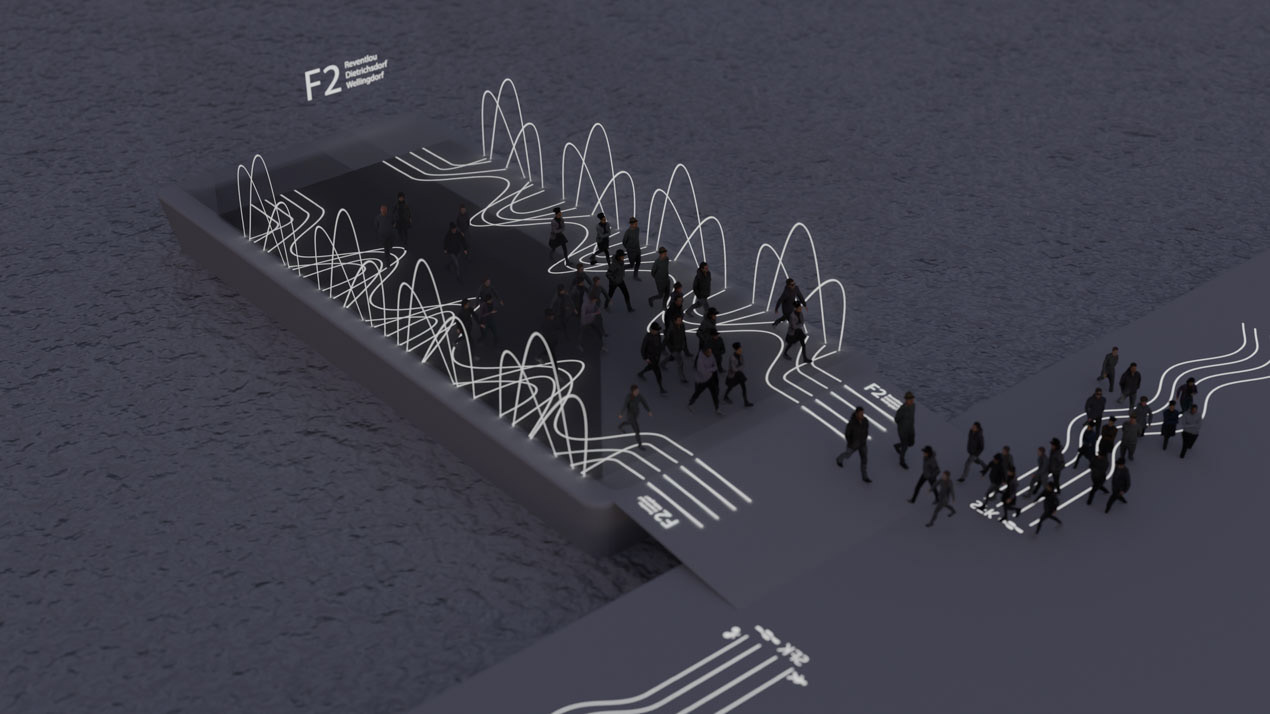

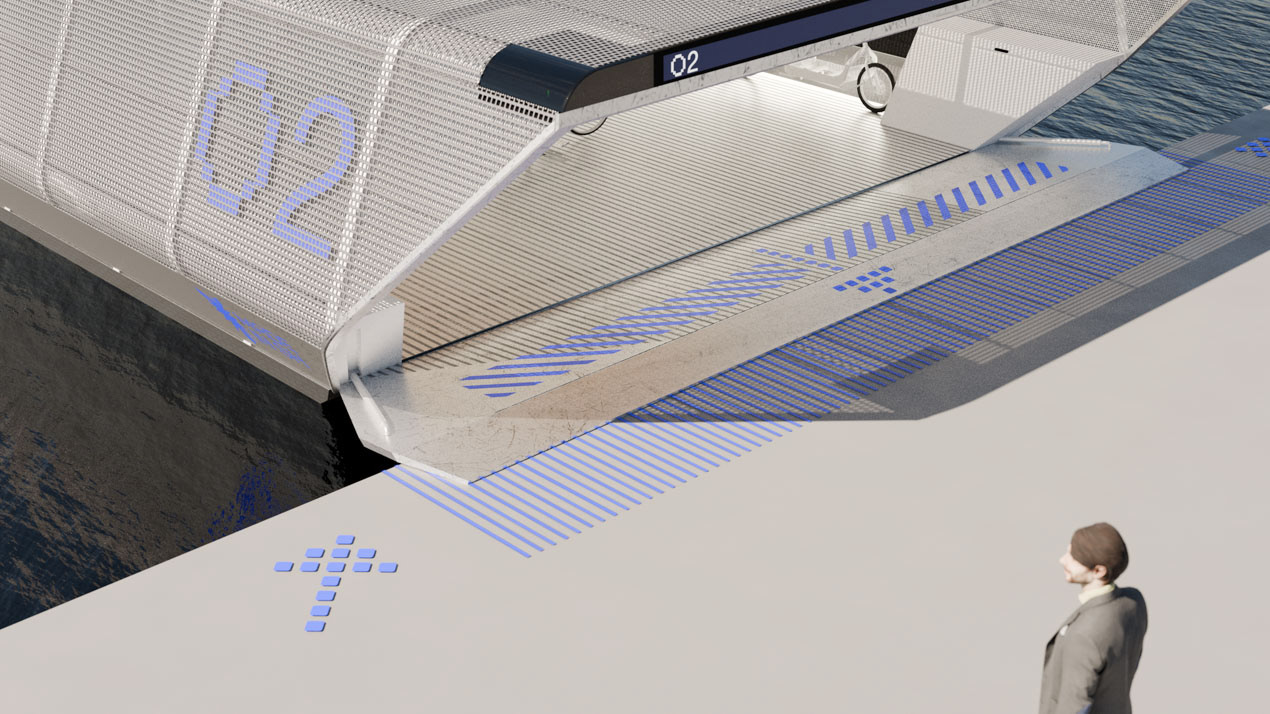

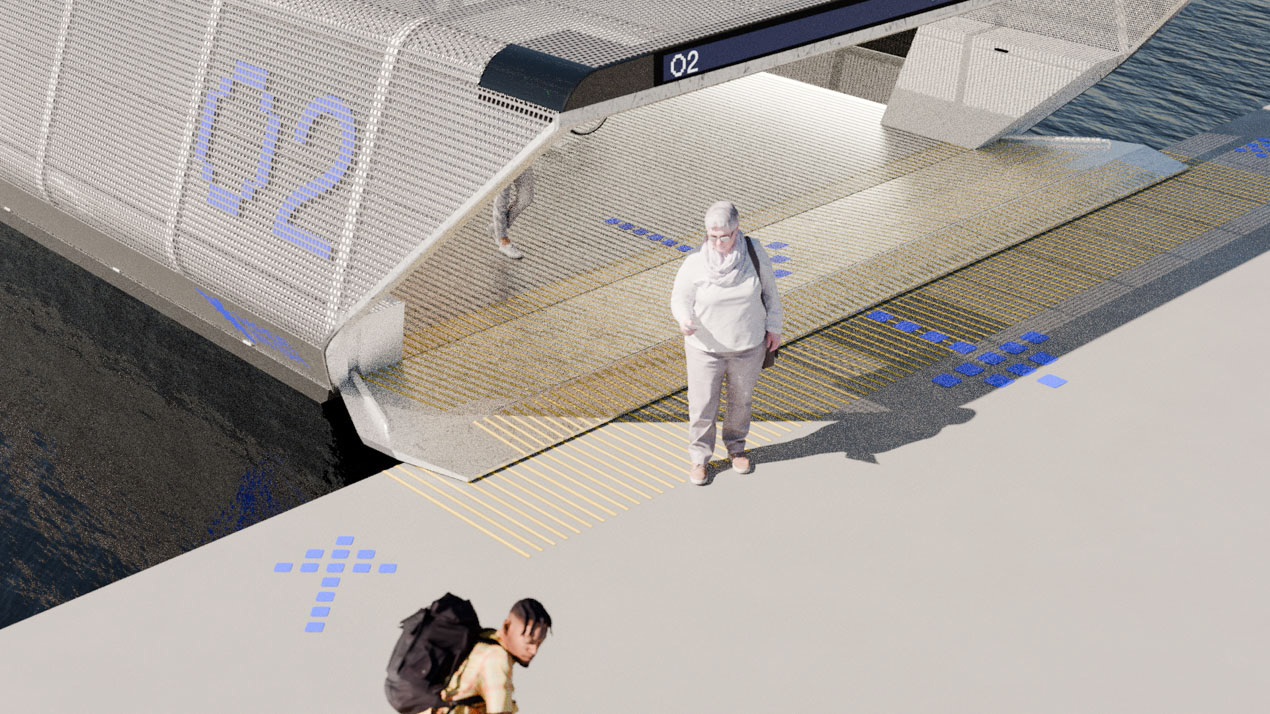



Defining the shape
Based on the information placement we‘ve set out to find a shape, material and details which incorporate the idea of a simple, light weight and transparent tunnel.
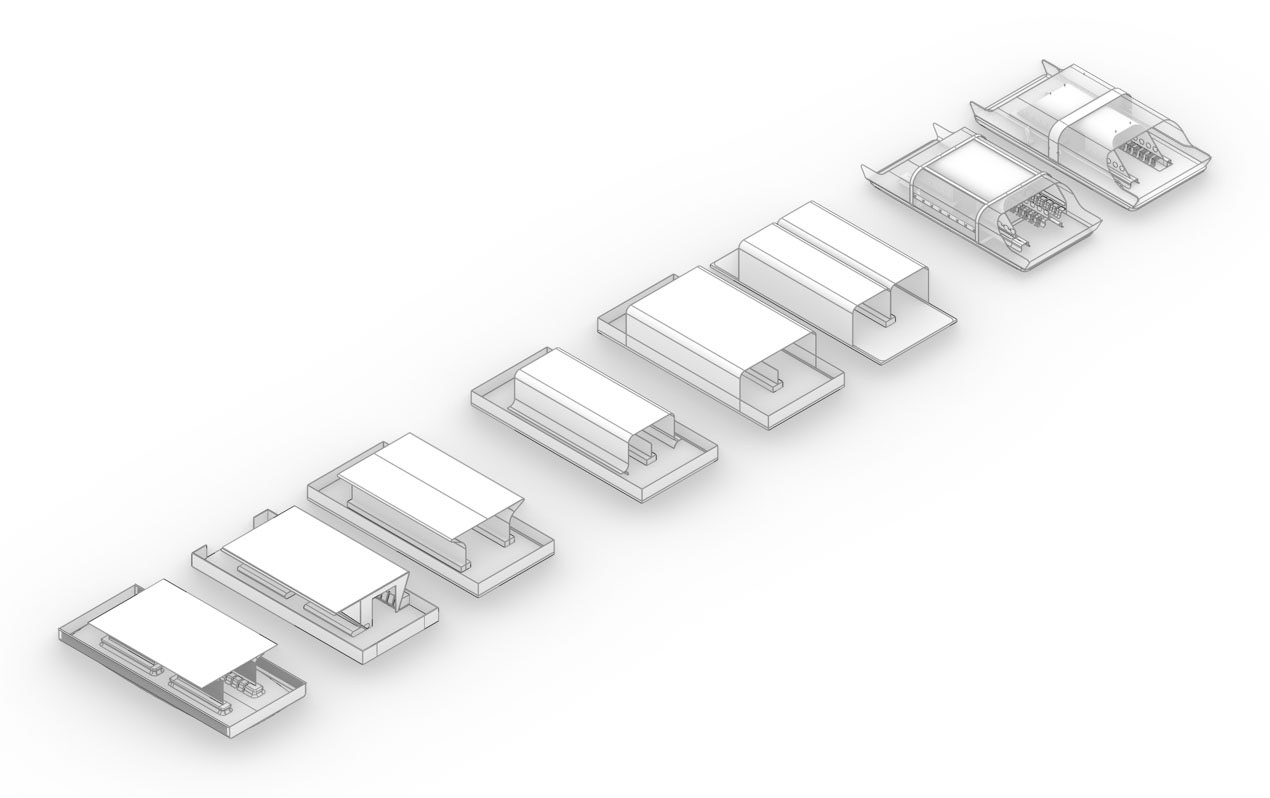
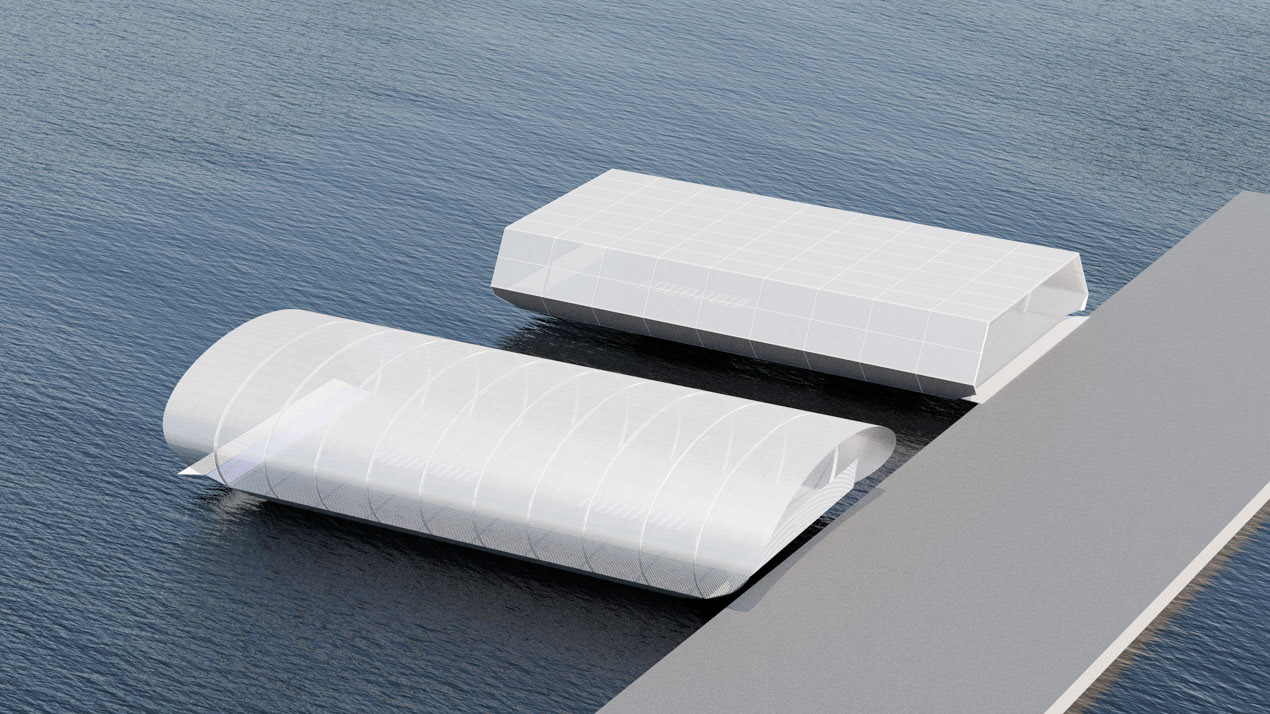

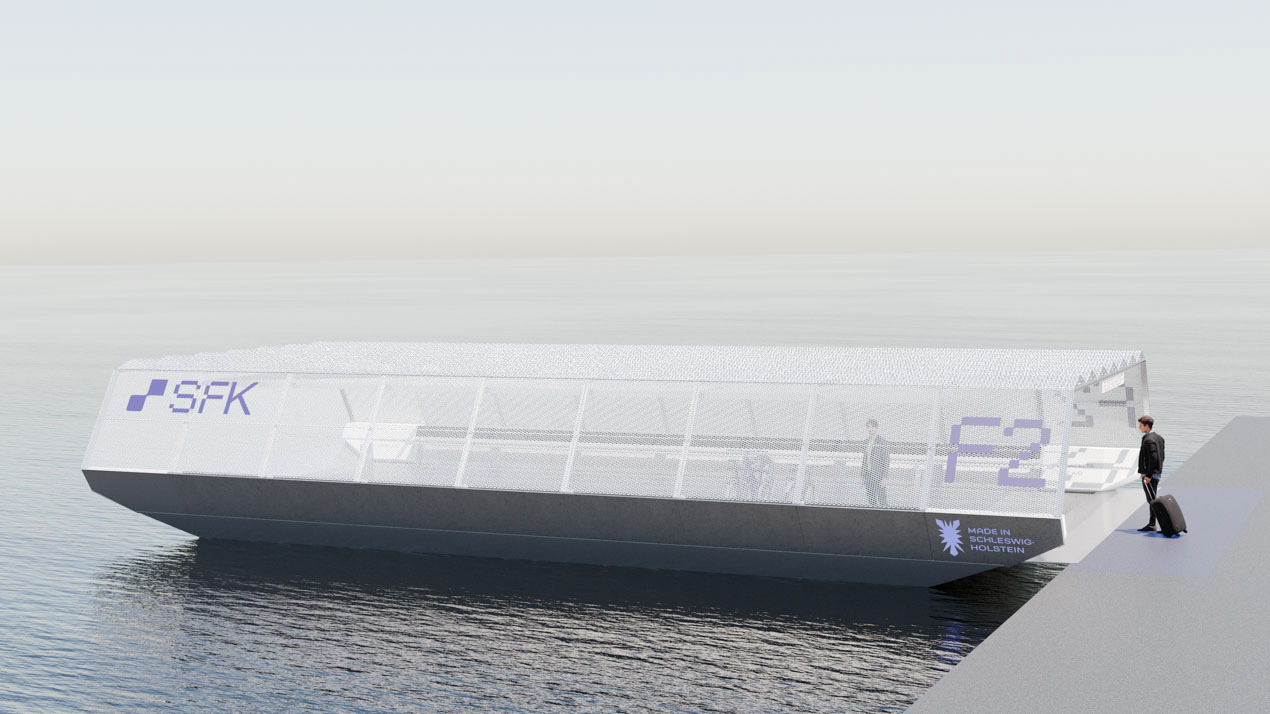
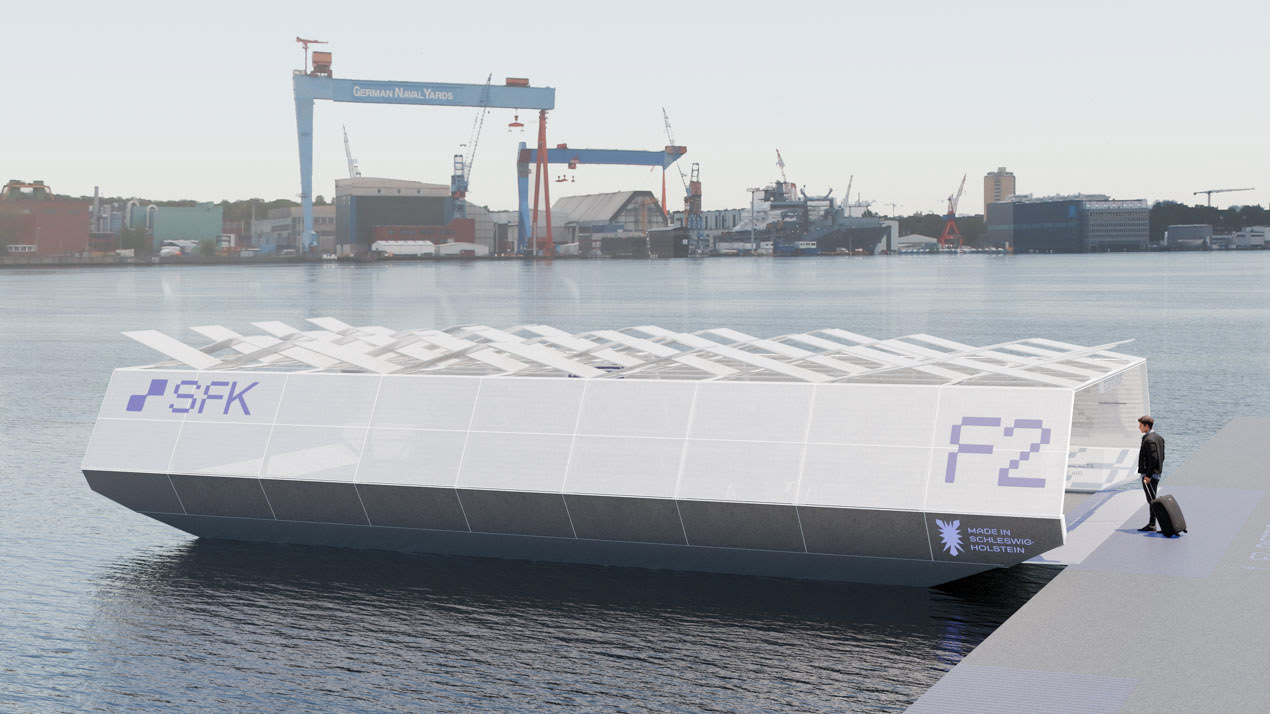
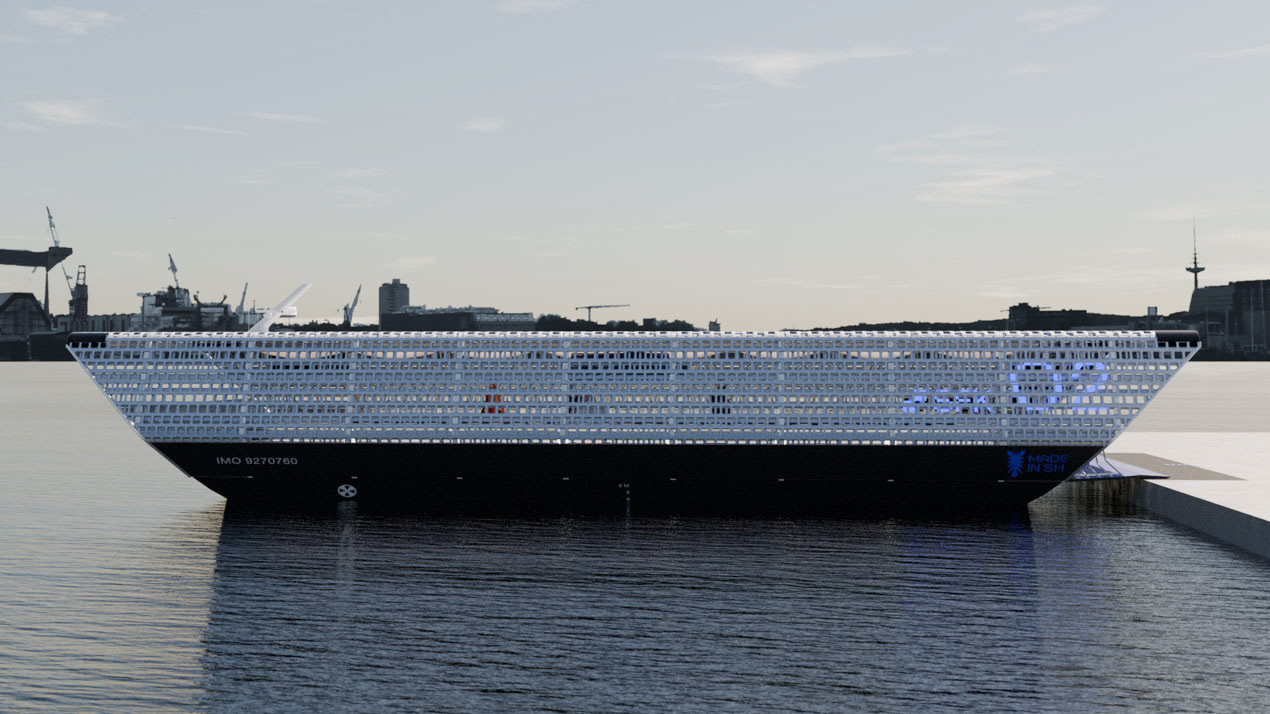
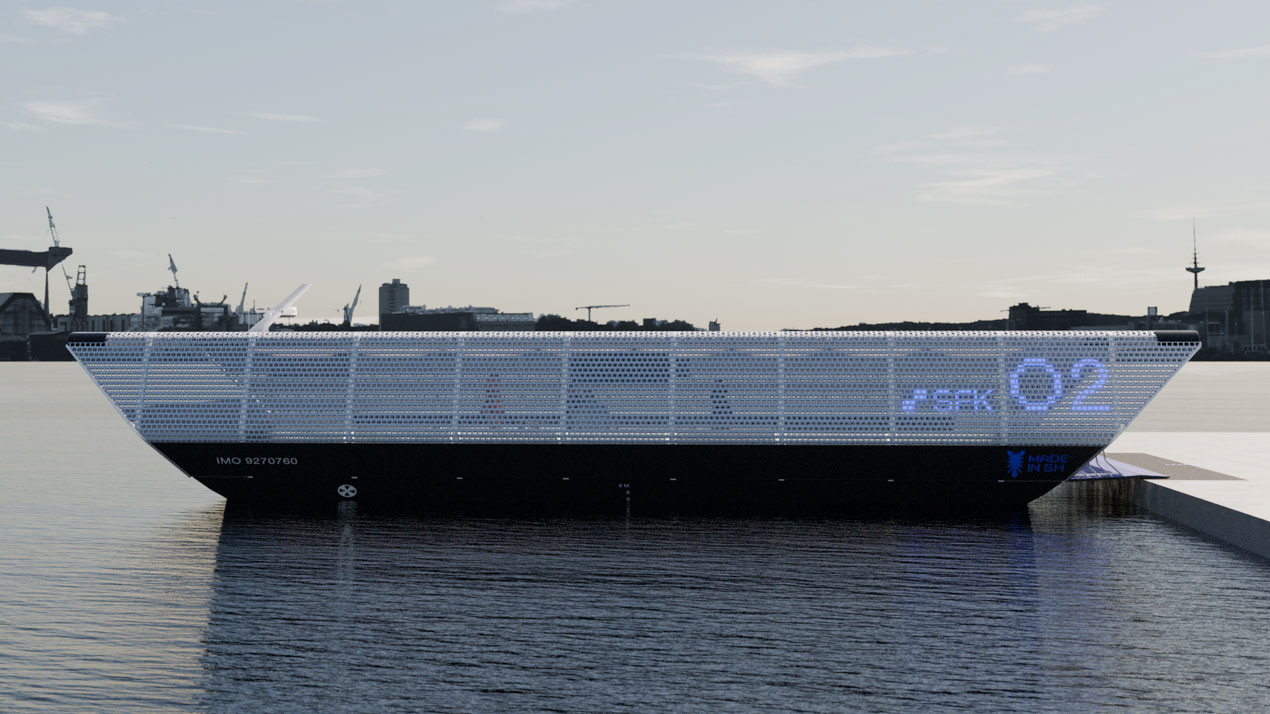
Transparency

The Ceiling
LINK is an open space, decisively airy. To guarantee comfort we've identified the need for some technology to be able to create such experiences. The ceiling is a high tech component, still ultra simple but it creates the safe space for passengers and a reason to use the ferry on cold, stormy or super warm summer days.
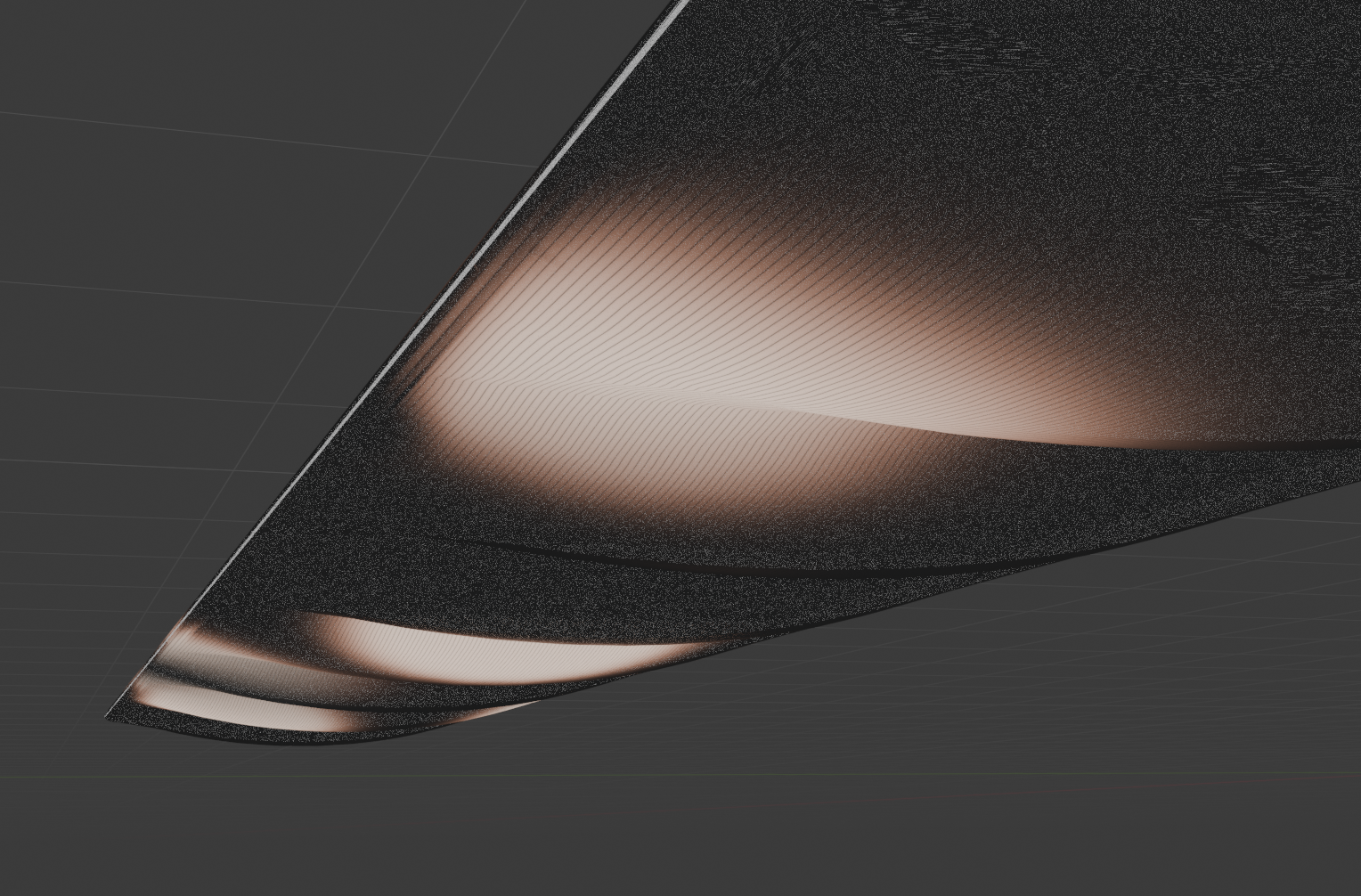

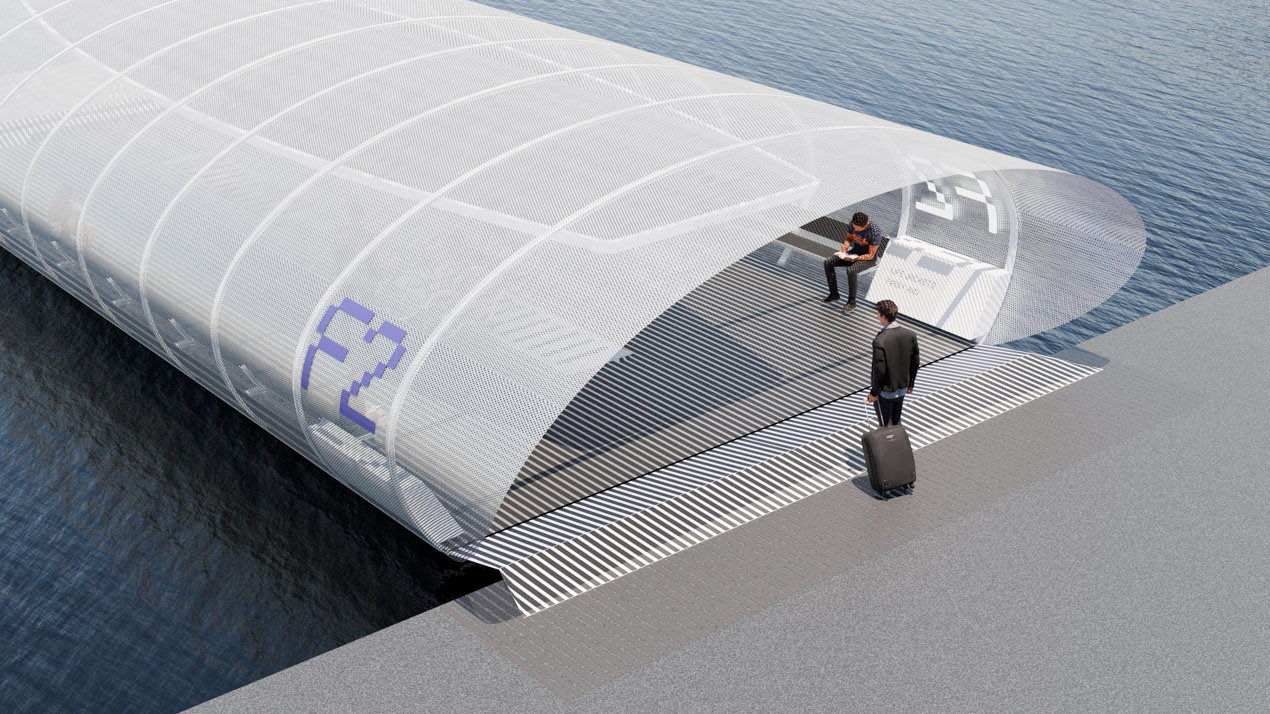
The Final design
"One Mobility"
The idea behind One Mobility is to make mobility seamless across all boundaries, so that various modes of transport such as ferries, bicycles, and buses merge into a single solution.
With LINK we have tackled and redefined what a sustainable public mobility concept means for a city. Integrating smart communications between individual public transports a whole new benchmark enabling you to move flexibly and efficiently without having to worry about transfers or waiting times.
As part of the mobility system, a solution was developed to make orientation in public spaces as clear as possible. The core element is the compass: routes are given prefixes based on their direction of travel for example, the N51 runs north and becomes the S51 at the final stop when heading south. Making them universal in language and as clear as possible.

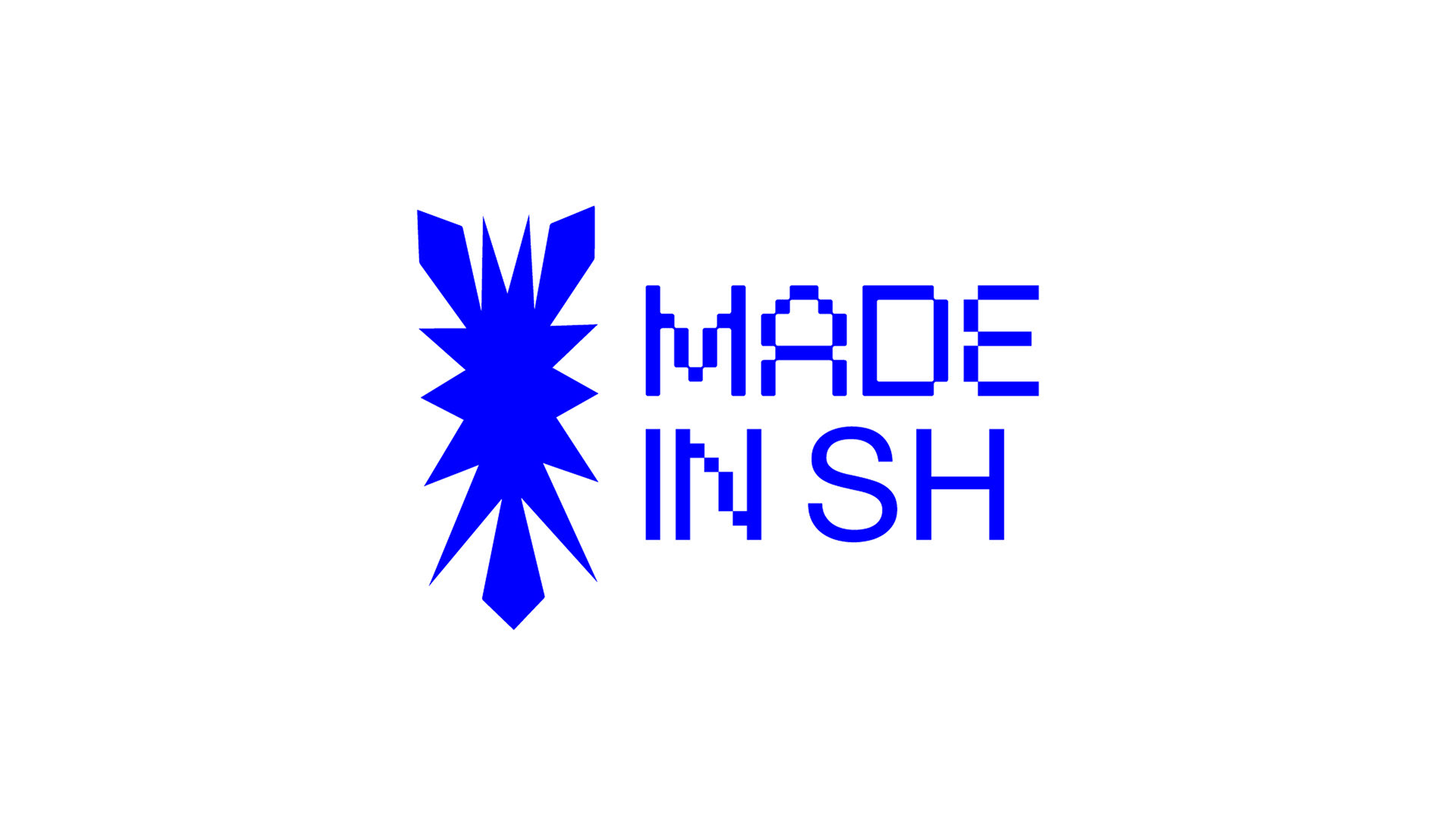

"On- and Off"
Through the concept of "One mobility", waiting times are minimised and LINK will wait or on route to pick up its passengers. The generated high dynamic is emphasised through informations, graphics and shape.

Connected via Phone
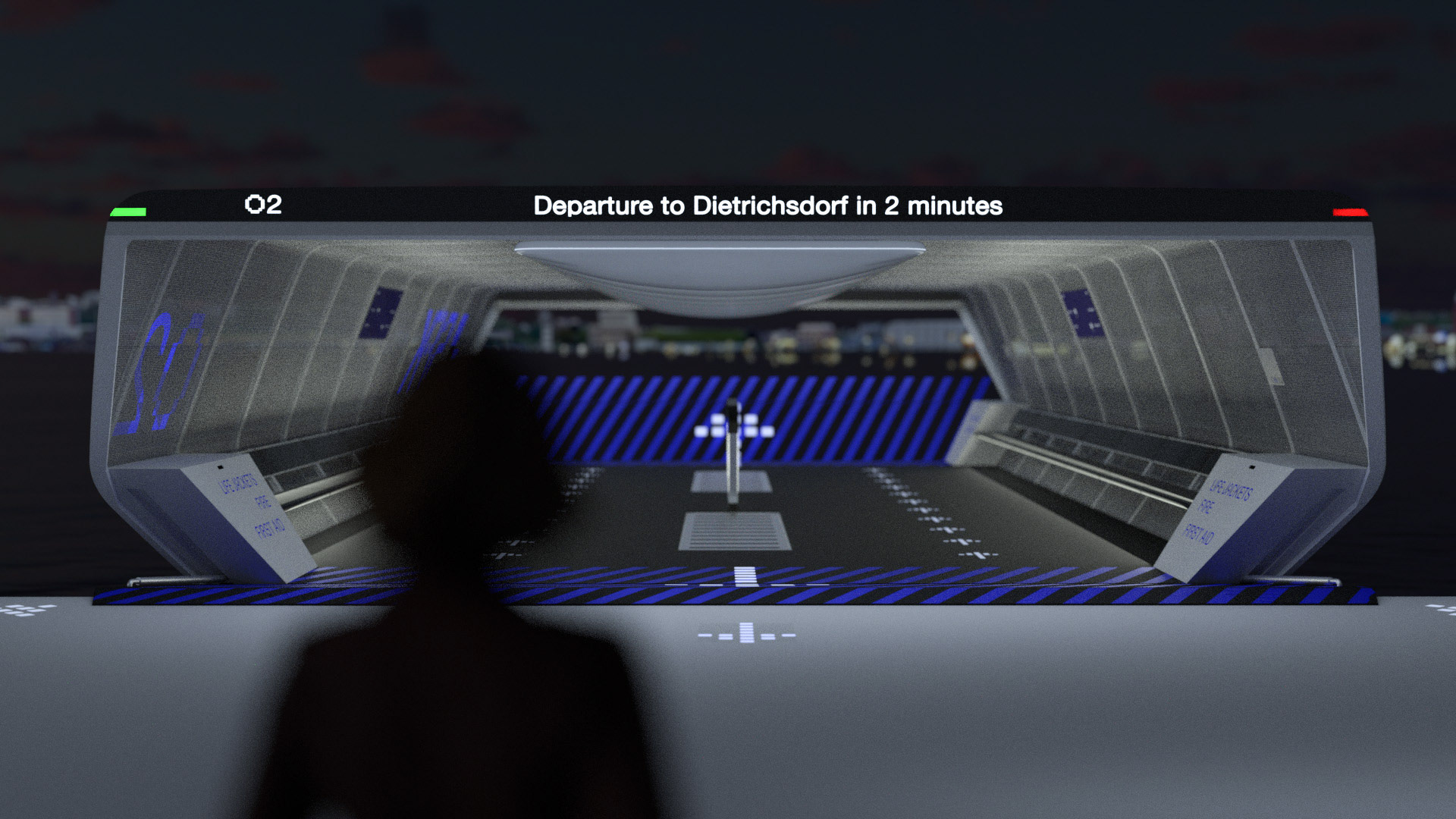
LINK waits for you
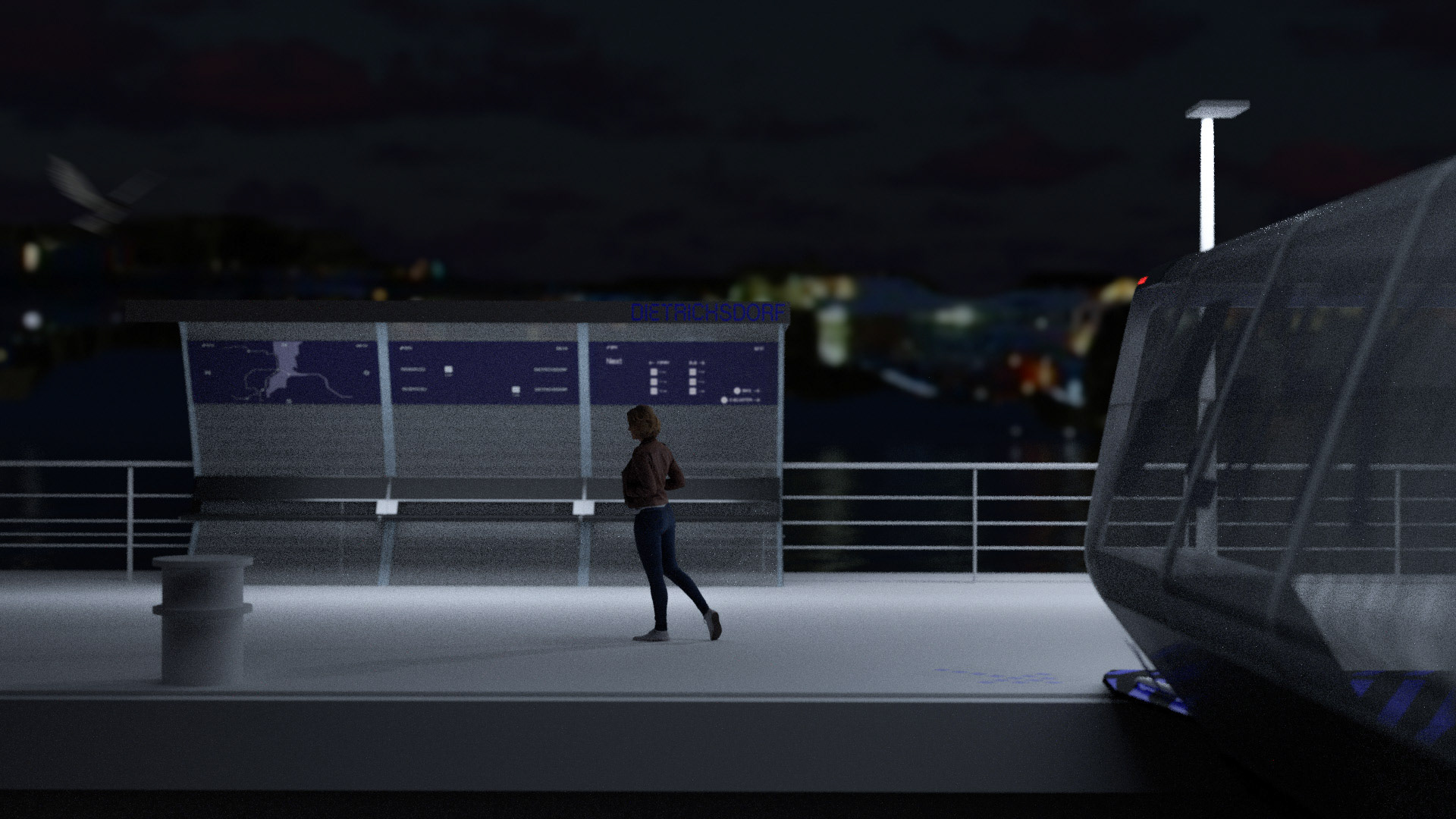
Ultra simple waiting area
Comfort & Touch points
Individual, dynamic and customisable experiences allow comfort for every trip. The Technologies within the ceiling can follow one around and be controlled through the phones.
Warming infrared heating
Cooling water mist
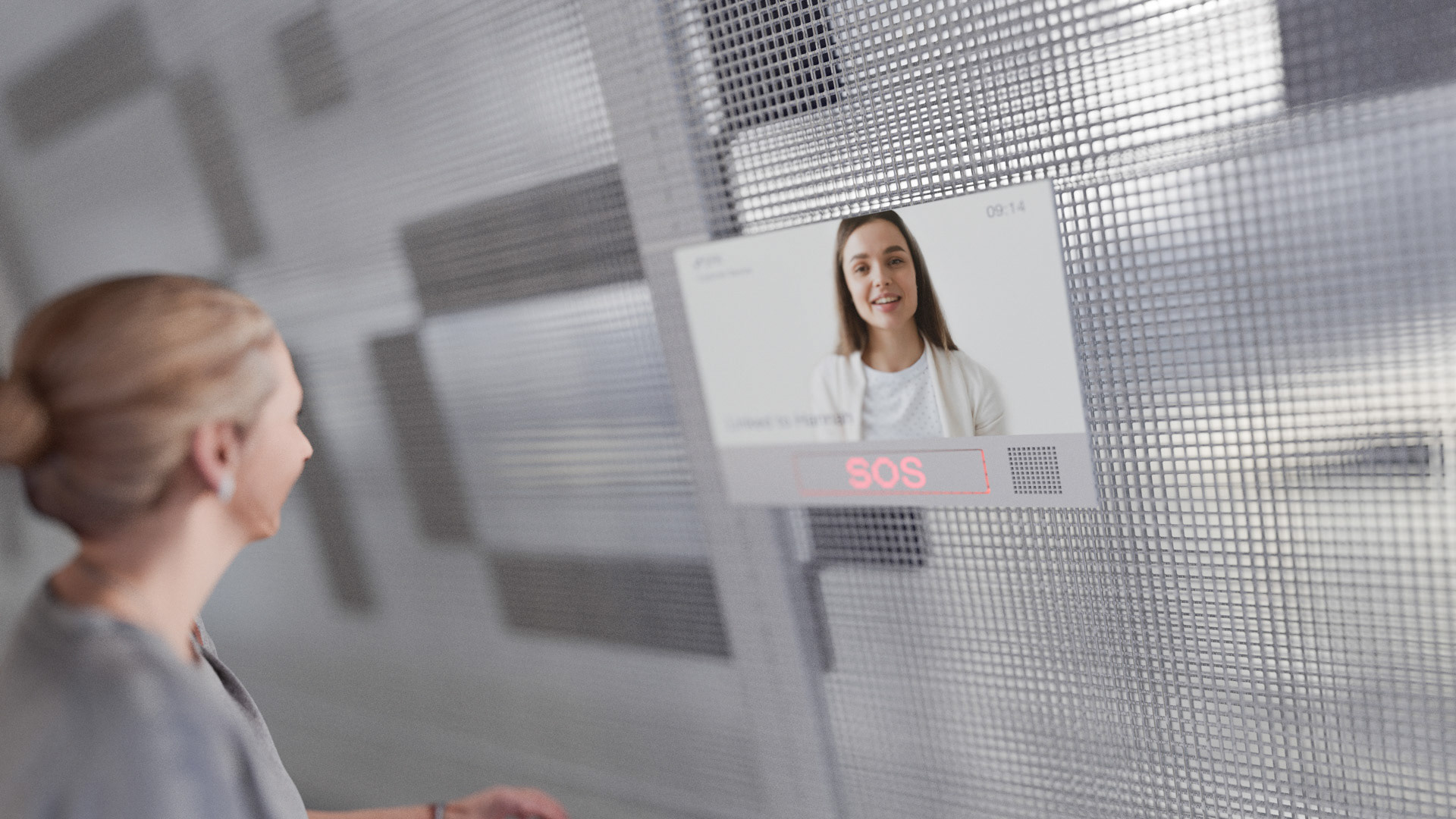
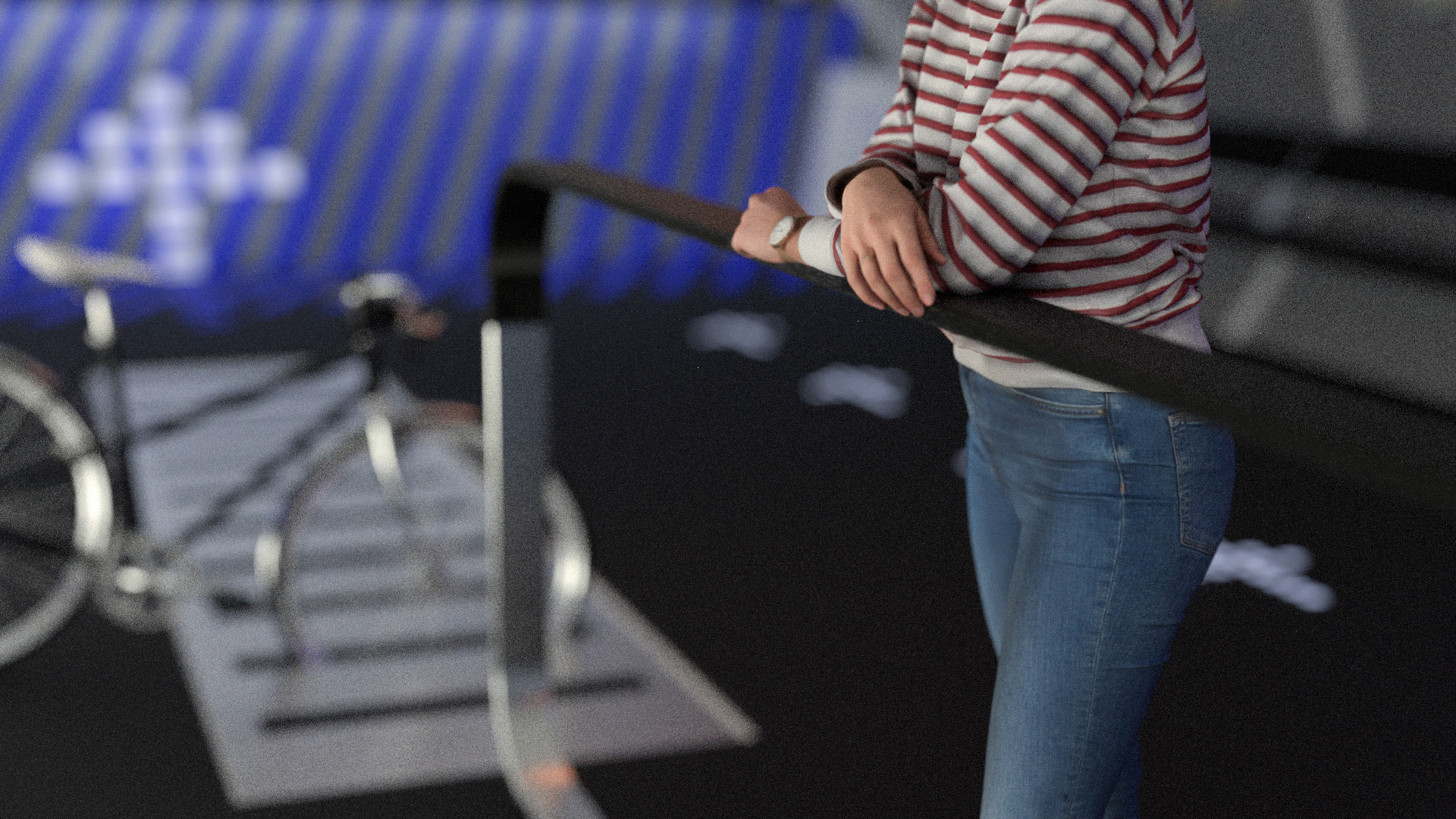
Ultra Simple & light weight
Standardized perforated sheet-metal plates and modular aluminum profile segments assemble LINK. Two layers of the perforated metal plates allow shielding from heavy wind and rain.
Exhibition & Awards
A detailed model of 1:10 scale and poster presented our work to the German ministry of transportation, local ferry company and international visitors.
